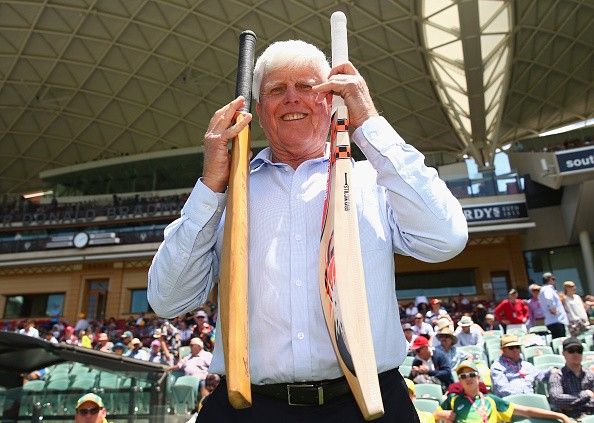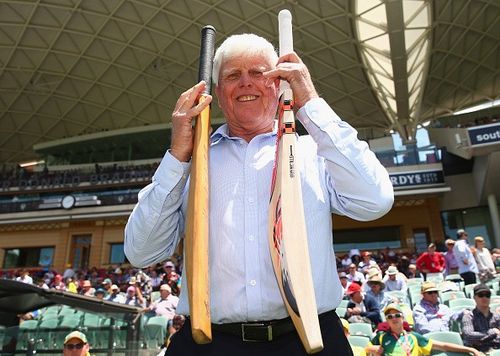
The modern cricket willow - A batsman's game
A few centuries ago when cricket was first brought to the masses, one could see an equitable battle between the bat and ball. It was an entertaining battle, with great shots being played, supplemented by equally top-class bowling.
The modern form of cricket however, has become a lop-sided contest. Bats nowadays are made of massive willows and any ball hurled at the batsman, be it good or bad, at whatever speed, is dispatched to the boundary with great disdain.
This is due to the power generated from the modern cricket bat. The term ‘tailenders’ has now almost lost its name, owing to the fact that even some of the bowlers who have a dubious record with their batting, can wield the bat to some effect due to the quality of bats made.
The history of bats
If we go back in time, we can observe that vintage cricket bats which wore the look of hockey sticks were used to play cricket, then over time held an image of baseball bats, shoulderless bats, meatless bats, and ultimately attained the shape of the modern bat.
In those times, the greats like Sir Donald Bradman, Viv Richards and Jack Hobbs were using massive bats which robbed them of the opportunity to play shots that required a lot of finesse. During this stage of cricket, batting was all about timing, with just a pinch of agression, quite contradictory to the current phase of the game.
In the 1960s, a bat launched by Slazenger concentrated more on giving the batsman a better feel of the ‘sweet spot’. Even during this stage, the game was two-sided with 230-250 being a tough score to chase in a ODI match.
There were quite a few ugly incidents with Dennis Lille’s aluminium bat called ‘COMBAT’ creating a lot of flutters on and off the field, Chris Cairn’s famous ‘Newberry’ bat, Michael Vaughan’s vaseline coated bat, and Ricky Ponting walking out with a reinforced graphite bat.
However, gone are the days when bats were only 2lb and a few oz. Innovations with the bat continued and then in 2005 came out a bat with a carbon fibre-reinforced polymer support to prop up the spine. This was banned by the ICC, spotting the game was taking wrong turns.
The Modern Era
The law on cricket bats states that :“The bat should be no more than 38 inches (97 cm) in length and no more than 4.25 inches (10.8 cm) wide”, which makes the current crop of blades radically different from the others.
The 21st century has witnessed a change in complexity of the game that has grown over the last decade. Matthew Hayden’s mongoose, Symonds’s baseball bat look-alike, were all signs of the changing times.
In recent times, even a 300-400 score on the board seems inadequate to defend. This is primarily due to the supreme quality of the bats. The law provides room for batsmen to experiment on their own designs, giving batsmen a perfect balance of their needs to satisfy their own style of play.
Modern bats are custom-made for power hitting weighing upto 3lb. Certain players have their own specifications. Examples are aplenty. Jacques Kallis has his bat done with more meat on the toe of the bat, while England skipper Eoin Morgan insists on a medium sized bat and Chris Gayle possesses bats with blades humongous enough to smash bricks into smithereens.
In order to satisfy the beginning of the T20 era, bats were given longer handles, and a meaty blade. With this improvement, the confidence of the bowlers started to deteriorate. In addition to this, the quality of the balls has not increased and continue to remain the same throughout, supporting the notion of cricket turning into a batsman’s game.
Even the world’s best bowlers see themselves getting plundered, and are often left scratching their heads, hot in pursuit for a solution to counter the batting prowess.
To sum it up, the modern day batsman possess massive blades, which are only getting bigger and better with time. Of late, cricketers have also started endorsing these brands, getting customised specifications they want on their bats in return.
The limited overs format has over time gained a lot of attention, forcing many players to modify their styles to suit this set-up. Even in Test matches players are trying to play unorthodox shots, testing the quality of new bats and also upsetting bowler’s rythms in the process.
Michael Holding recently said “Bats no longer have edges. They have a front, a back – and two sides.” This is the modern cricket willow. The willow capable of tormenting the world’s best.
